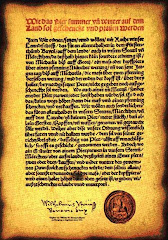
Many secrets of art and nature are thought by the unlearned to be magical.
- Roger Bacon
No, this is not an incorrectly spelled Hawai’ian word. It is the first part of a somewhat mysterious process called MALO-LACTIC FERMENTATION. I say mysterious because it was not until the mid 1980s that the process was accurately identified, analyzed, and mastered. Though this process was present in winemaking since wine was first made, it was not known what “it” actually was. Malo-lactic fermentation, AKA secondary fermentation, is a process that occurs naturally and transforms the harsher malic acid (HOOC.CHOH.CH2.COOH., for you techno geeks), think sour green apples, into the softer lactic acid, (HOOC.CHOH.CH3), think dairy products. In so doing, a portion of the malic acid is converted into carbon dioxide, (CO2), and mostly goes away.
This process is beneficial in wines with high acidity, especially red wines from cooler growing areas; whites gain from this secondary fermentation as acid is quite noticeable, due in part to the fact that their acidity is high. However, in warmer climates, or in warm years in cooler growing areas, e.g. the Loire or the Mosel, if the Malo-lactic fermentation takes place, it may actually reduce the quality of the wine by throwing it out of balance. This is so because the acid in whites such as Chenin Blanc and Riesling, have their wonderful fruitiness balanced by high acidity. If acidity is reduced too much, the wines taste flat and uninteresting.
Try not to get confused here. Secondary fermentation relates to MALO-LACTIC FERMENTATION. If you are thinking about what happens with champagnes and sparkling wines, theirs is a SECOND FERMENTATION in the bottle. The wines are fermented dry and then put back in the bottle with the addition of yeast and sugar to create a second fermentation.
Chardonnay is a grape that does well with secondary fermentation. This determines the quality we often refer to as buttery in a wine that has undergone malo-lactic fermentation. (This chemical is known as DIACETYL.) If this aroma is in balance with the fruit and acid, it adds a wonderful note of aromatic and taste complexity. If overdone, it can become objectionable to the point where the “butteryness” overpowers the fruit of the wine.
How can a wine maker control this secondary fermentation? Historically, this secondary fermentation occurred in the spring time when cellar temperatures warmed and there was still sugar remaining in the “new wine.” In a modern winery, the wine maker can add lactic bacteria soon after fermentation starts. This timing allows the bacteria a comfortable temperature range; an acid level that it can tolerate; and an alcohol level with which the bacteria are comfortable. Those lactic bacteria are a picky group!
In some cases, a wine maker may rack off the wines after fermentation and place the juice in older wooden vats or casks that have a history of causing secondary fermentation. This does take longer and delays release of the wine. There may also be other bacteria that can contaminate and spoil the wine, so the wine maker must be careful in his or her choices for cask or barrel secondary fermentation.
If a malo-lactic fermentation takes place after a wine is bottled, it can create unpleasant tastes, will put bubbles in the wine , and will be an uncontrolled secondary fermentation. The winemaker will have no way of knowing if his wine is balanced and complex, or flabby and uninteresting.
I will give you another article on when a secondary fermentation is desired, even required, in certain traditional sparkling wines from France. But remember, these wines have a traditional secondary fermentation in the bottle because, decades ago when the wines were first produced, wine makers did not know what was happening. After time, this process of "unknowing" became tradition and then tradition became regulation.





No comments:
Post a Comment